 |
 |
01.08.26

Leading Thoughts for January 8, 2026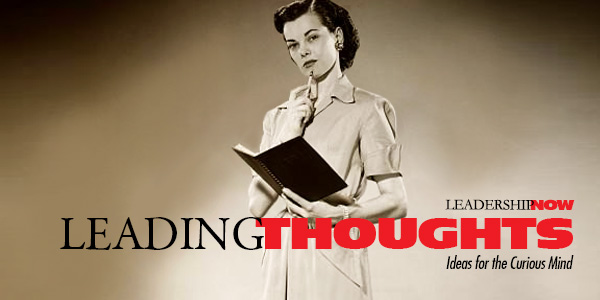
IDEAS shared have the power to expand perspectives, change thinking, and move lives. Here are two ideas for the curious mind to engage with: Performance Coach Julie Gurner on caring deeply: “You have to care deeply to be able to challenge directly, and … somebody has to know that you care deeply about who they are in their role, that you care about their performance, that this is coming from a place that’s meant to make them better. And if it’s not coming from that place, and it’s coming from a place of punishing or shaming or humiliating or dominating, it’s not a really effective thing to do. But people can take hard feedback from people that they know are in their corner.” Source: The Knowledge Project Podcast: Caring Deeply, Challenging Directly Heidi Priebe on loving someone as they change: “To love someone long-term is to attend a thousand funerals of the people they used to be. The people are too exhausted to be any longer. The people they don’t recognize inside themselves anymore. The people they grew out of, the people they never ended up growing into. Source: This Is Me Letting You Go Look for these ideas every Thursday on the Leading Blog. Find more ideas on the LeadingThoughts index.
Posted by Michael McKinney at 03:40 PM
01.01.26

First Look: Leadership Books for January 2026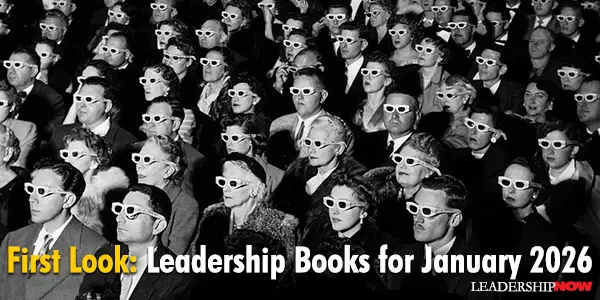
HERE'S A LOOK at some of the best leadership books to be released in Janaury 2026 curated just for you. Be sure to check out the other great titles being offered this month.
Setting goals is easy. Following through on them? A whole lot harder. It turns out, the secret to finishing what you start isn’t sheer willpower or the latest productivity hack. It’s becoming more intentional. With Intentional, bestselling author Chris Bailey distills a decade of deep research on productivity to deliver a profound, practical, and counterintuitive road map to getting things done. Forget extensive to-do lists and a never-ending workload. To reach your goals, you must structure your daily actions around what’s most important to you—and let go of the rest. This way, getting things done becomes second nature.
An eye-opening discussion on the transformative impact of AI and how to prepare for a new future. In The Next Renaissance, acclaimed AI advisor Zack Kass presents an optimistic and compelling vision of how artificial intelligence will shape our lives. Drawing on historical context, cutting-edge advancements, and firsthand experience, Kass lays out how AI will become a collaborative partner in building a better, more creative, and more compassionate world. Just as the original Renaissance revolutionized art, science, and society, today’s AI-driven Renaissance will redefine how we create, innovate, and flourish. Kass leverages his deep industry expertise to explain how this transformative technology will solve previously unimaginable challenges, presenting entirely new possibilities.
Rewire your organization—and your leadership—for a world driven by projects. It's time to stop treating projects as side work. In the age of constant transformation, projects are the primary way organizations create value and accelerate innovation. In this new paradigm—the project economy—traditional agile approaches are no longer enough. The next evolution is the project-driven organization, where projects sit at the center of how companies are structured, led, and rewarded. Powered by Projects explores this bold new model. Antonio Nieto-Rodriguez, the worldwide expert on project-based work, reveals the leadership styles and organizational structures necessary to drive success today.
Great ideas are all around us, waiting to be discovered. Here’s how to find them. We’re used to imagining creativity as a lightbulb moment—sudden, mysterious, reserved for the gifted few. But what if ideas aren’t conjured from thin air? What if they’re discovered—more like precious artifacts that we unearth and refine? In How Great Ideas Happen, cognitive scientist George Newman draws on cutting-edge research to show that creativity isn’t magic, it’s method. The most successful innovators don’t wait to be struck by brilliance; their creative process is more like archeology. As keen-eyed explorers, they scan the terrain, dig with intention, and, with a little luck, find gold.
Whether you are practicing guitar, pushing your limits at the gym, leading a team, honing a craft, studying medicine, or giving yourself the time and space to finally write that book, the pursuit of excellence is a big part of what makes life worth living—and it is for all of us. Unlike "pseudo-excellence," which is about hustle culture and hacks, genuine excellence is about challenging yourself in worthwhile endeavors, focusing on what matters most, and expressing the unique qualities that make you who you are. Too often, we get caught up in convenience and distraction to the detriment of our true potential. The good news is that we can set ourselves on a better path, one that includes more aliveness and resonance, more connection to self and others. Here, Stulberg finds convergence between modern science, age-old philosophy, and daily practice to explain that we are wired to strive for excellence—it is what we are here to do, core to our humanity. Yet our environment often works against us.
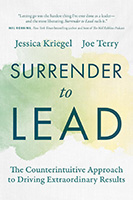  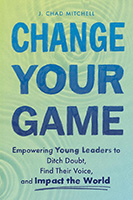 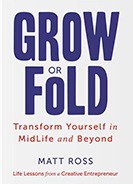
“I read books because, at their best, they make me better, more empathetic, more socially aware, more in tune to the stranger beside me. They help me imagine a better future, provide me with answers to my insatiable questions, take me to places I’ll never get to go. ” — Annie B. Jones
Posted by Michael McKinney at 05:01 PM

Leading Thoughts for January 1, 2026
IDEAS shared have the power to expand perspectives, change thinking, and move lives. Here are two ideas for the curious mind to engage with: Psychologist Shane Lopez on hope: “Hope keeps us in the game. With low hope, we stop interacting with the world. We pull back. Literally, we don’t show up. We just move through in a zombie-like state. We all go through periods of sustained low hope, and they don’t lead to anything good at all. But hope for the future—maybe even the distant future—is what keeps people focused and moving in a direction that makes sense for their welfare and the welfare of the organization.” Source: Decade of Change: Managing in Times of Uncertainty Robert Quinn on externally and internally driven people: “People in the reactive mode tend to make emotions the centerpiece of their lives. Emotions become the measurement system for assessing the immediate situation. People are then forever fleeing from or searching for the ‘right’ situation, the one that will make them happy. Internally driven people have a different perspective. They know that their emotional states keep changing. They pursue their intended result no matter what their temporary emotion might be.” Source: Change the World: How Ordinary People Can Achieve Extraordinary Results Look for these ideas every Thursday on the Leading Blog. Find more ideas on the LeadingThoughts index.
Posted by Michael McKinney at 12:55 PM
12.31.25

LeadershipNow 140: December 2025 Compilation
See more on
Posted by Michael McKinney at 09:04 AM
12.25.25

Leading Thoughts for December 25, 2025
IDEAS shared have the power to expand perspectives, change thinking, and move lives. Here are two ideas for the curious mind to engage with: Nicole Vignola on learning: “The first major underpinning of a growth mindset is that people with this mindset understand that learning is a valuable opportunity in the face of adversity. When people believe that they can improve and grow from failure and setbacks, they are more likely to engage in challenging tasks and persist through difficulty. When people know and understand that the brain is malleable and are willing to adapt to circumstance, they are likely to persist in the face of obstacles. This perseverance can enhance pathways in the brain that are associated with learning, which strengthens the notion that learning is a dynamic process that’s forever evolving.” Source: Rewire: Break the Cycle, Alter Your Thoughts and Create Lasting Change
David McCullough on learning from others: “Be generous. Give of yourselves. Count kindness as all-important in life. Take interest in those around you. Try to keep in mind that everyone you encounter along the way, no matter their background or station in life, knows something you don’t. Get in the habit of asking people about themselves, their lives, their interests, and listen to them. It’s amazing what you can learn by listening.” Source: History Matters Look for these ideas every Thursday on the Leading Blog. Find more ideas on the LeadingThoughts index.
Posted by Michael McKinney at 01:28 PM
12.19.25

The Best Leadership Books of 2025
THE titles listed below, published in 2025, improve our self-awareness regarding relationships and communication the sine qua non of leadership and provide us with a wider perspective on innovation and the changes taking place around us.
(W. W. Norton & Company, 2025)
(TarcherPerigee, 2025)
(Harvard Business Review Press, 2025)
(Grand Central Publishing, 2025)
(Harriman House, 2025)
(Crown Currency, 2025)
(Harvard Business Review Press, 2025)
(Wiley, 2025)
(Scribner, 2025)
(Harvard Business Review Press, 2025)
(Wiley, 2025) Biographies:
(W. W. Norton & Company, 2025)
(Harvard Business Review Press, 2025)
(Fast Company Press, 2025)
(Harvard Business Review Press, 2025)
Posted by Michael McKinney at 10:21 AM
12.18.25

Leading Thoughts for December 18, 2025
IDEAS shared have the power to expand perspectives, change thinking, and move lives. Here are two ideas for the curious mind to engage with: L David Marquet and Michael Gillespie on focusing on our future self: “By changing our time-based point of reference, we inoculate ourselves from the present moment-biased effect of temporal discounting that we are otherwise subject to. The temporal distance reduces the importance and even the visibility of practical constraints. We do not feel them. When those practical constraints fade away, what we are left with is our ideal self. It is almost always a better human and allows us to focus on what we care most about, distinct from the urgent hassles, compromises, concessions, and justifications of today.” Source: Distancing: How Great Leaders Reframe to Make Better Decisions Margaret Andrews on managing yourself: “Self-understanding gives us insight, but self-management helps us get there. Altering the way we behave changes the way people perceive and respond to us, and can change the way we think and feel about ourselves. With time and practice, the new behavior becomes a more natural component of our leadership style and way of being. This, in turn, has transformative effect on our own leadership abilities as well as the product of the work we do with and through others.” Source: Manage Yourself to Lead Others: Why Great Leadership Begins with Self-Understanding Look for these ideas every Thursday on the Leading Blog. Find more ideas on the LeadingThoughts index.
Posted by Michael McKinney at 03:26 PM
12.15.25

Lessons from the Octopus About Leading AI Transformation
SIXTY-SIX million years ago, an asteroid strike wiped out the dinosaurs and 75% of Earth’s species. Among the survivors was a creature that would teach us critical lessons about thriving amid disruption: the octopus. While other animals’ external armor was useless against this new threat, the octopus survived by being radically adaptable. It has a rare ability; it can edit its RNA to adjust to new conditions within hours. Today’s leaders face their own asteroid strike: artificial intelligence. And like that ancient catastrophe, AI is reshaping the business landscape with breathtaking speed. The question isn’t whether your organization will be transformed, but whether you’ll lead that transformation or be overwhelmed by it. Having worked with dozens of organizations navigating AI adoption, we’ve seen that the most successful leaders don’t treat AI as just another technology implementation. Instead, they recognize it as a catalyst for fundamental organizational redesign. Here are four critical lessons for leading this transformation. 1. Distribute Intelligence to the Front Lines The octopus has two-thirds of its neural tissue in its arms, not its brain. As a result, each arm can solve problems independently while remaining coordinated with the whole. This is the ideal model for organizations: push decision-making power to where the action happens. Most companies still operate with a “hub and spoke” command structure, where information flows up for decisions and then back down for execution. This creates costly delays. AI changes the game by making sophisticated analysis available at every level. A sales rep can now access predictive customer insights. A supply chain manager can run complex optimization scenarios. A customer service agent can resolve issues that once required escalation. Take the case of Mass General Brigham, one of the world’s leading healthcare systems. AI tools help frontline clinicians identify patterns and make treatment decisions faster, while leadership focuses on ensuring these tools integrate seamlessly into workflows and align with core values. Action Step: Identify three decisions currently made at the management level that could be delegated to frontline teams with the right AI support. Then invest in making that support first-rate. 2. Create Knowledge Flow, Not Silos The octopus has a “neural necklace,” a ring of nerve bundles that connects all its arms, enabling instant information sharing without involving the central brain. Your organization needs the digital equivalent. Too many companies treat AI as a series of disconnected point solutions: a chatbot here, a forecasting tool there, an image recognition system somewhere else. But AI’s real power emerges when insights flow freely across organizational boundaries. When your customer service AI informs your product development AI, which feeds your supply chain AI, you create compounding intelligence. This requires rethinking your data architecture. Follow Amazon’s example: for over two decades, teams have been required to make every dataset accessible through well-documented interfaces. Action Step: Map the information flows your AI systems require to be most effective, then eliminate the structural barriers preventing those connections. This often means confronting uncomfortable truths about departmental turf and legacy systems. 3. Embrace Three-Hearted Leadership The octopus has three hearts: one for its body and one for each gill. These hearts serve different purposes, and one can even be stopped temporarily to redirect energy to the others. Modern AI transformation requires a similar multiplicity of leadership approaches and an ability to shift focus. First, you need operational leadership that maintains excellence in your core business while AI tools enhance productivity. Second, you need experimental leadership that explores how AI might create entirely new business models or revenue streams. Third, you need cultural leadership that addresses the very human concerns about what AI means for people’s roles and dignity. The computer accessories company Logitech has balanced all three hearts effectively. It has used AI to streamline operations, explored AI-powered new product categories, and conducted town halls where employees could voice concerns and shape how AI would be deployed. This has resulted in both productivity gains and sustained employee engagement. Action Step: Assess which of these three leadership dimensions you’re neglecting. Then tell managers which styles to focus on and when. 4. Accelerate Through Accurate Sensing The octopus has exceptional sensory capabilities. It has thousands of chemoreceptors on its arms that constantly feed information about its environment. In an AI transformation, your sensing mechanisms are how you detect both opportunities and emerging problems. Most organizations implement AI tools but fail to instrument them adequately. They can tell you if the tool is being used, but not how it’s changing workflows, where it’s introducing errors, or what new capabilities users wish it had. This is flying blind. Build comprehensive sensing into every AI initiative from day one. This means usage analytics, certainly, but also regular qualitative feedback sessions, error tracking with root-cause analysis, and competitive intelligence on how others in your industry are applying similar capabilities. When you spot patterns—positive or negative—you can respond at AI speed rather than committee speed. Action Step: Before deploying your next AI tool, design the feedback mechanisms that will tell you what’s really happening. Make reviewing this feedback a weekly ritual, not a quarterly afterthought. The Transformation Imperative The asteroid that killed the dinosaurs created the conditions for mammals to flourish. AI’s disruption is similarly clearing space for new organizational forms, ones that are more adaptive, more intelligent, and more resilient. The uncomfortable truth is that cautious, incremental approaches won’t cut it. The companies that thrive will be those willing to redesign their organizations around AI’s capabilities—distributing intelligence, connecting insights, embracing complexity, and moving at the speed of algorithms. The question facing every leader today isn’t whether to transform. It’s whether you’ll transform deliberately, learning from nature’s most adaptable creature, or be transformed by forces you didn’t see coming. The asteroid has already struck. The age of the Octopus Organization has begun.  
Posted by Michael McKinney at 11:31 AM
|
BUILD YOUR KNOWLEDGE
 

How to Do Your Start-Up Right STRAIGHT TALK FOR START-UPS 
Grow Your Leadership Skills NEW AND UPCOMING LEADERSHIP BOOKS 
Leadership Minute BITE-SIZE CONCEPTS YOU CAN CHEW ON 
Classic Leadership Books BOOKS TO READ BEFORE YOU LEAD |